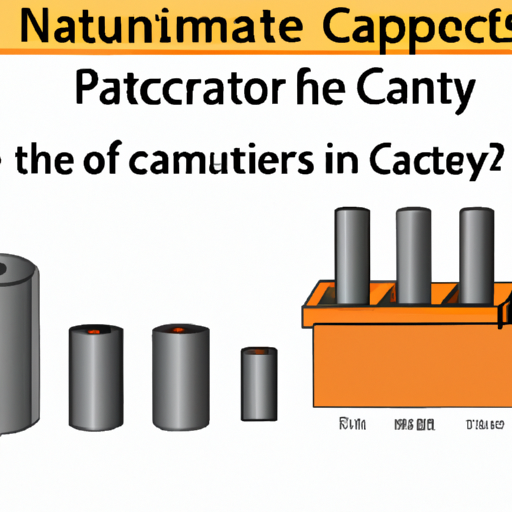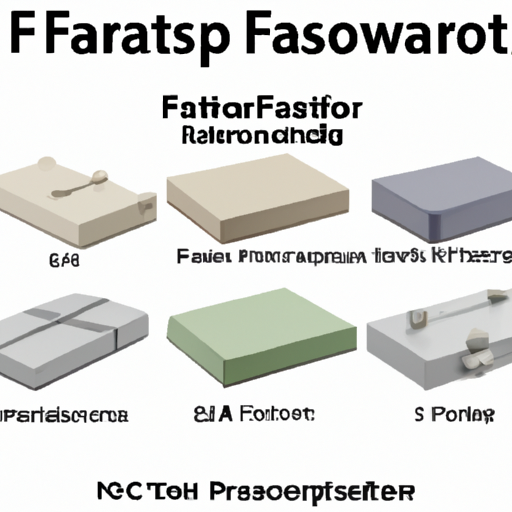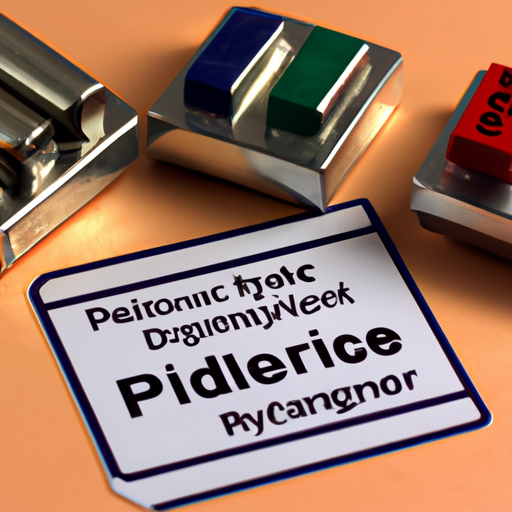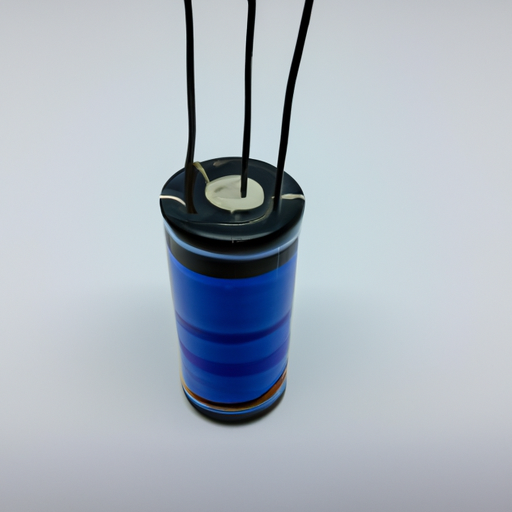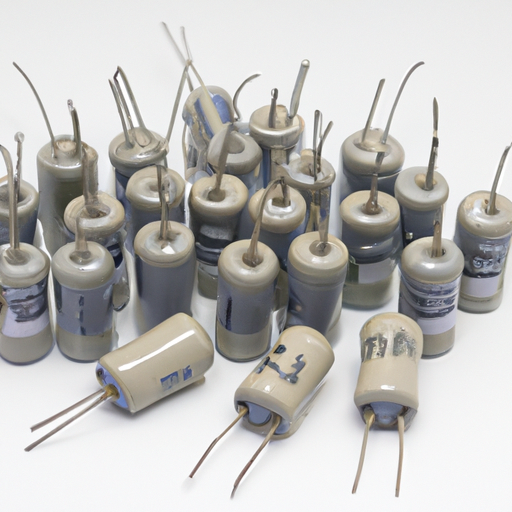What components and modules does the capacity of a capacitor contain?
What Components and Modules Does the Capacity of a Capacitor Contain?
I. Introduction
Capacitors are fundamental components in electrical and electronic circuits, playing a crucial role in various applications. They store and release electrical energy, making them essential for energy management, signal processing, and timing applications. Understanding the capacity of a capacitor—its ability to store charge—is vital for engineers and hobbyists alike. This blog post will explore the components and modules that contribute to the capacity of a capacitor, providing insights into their functions and importance.
II. Basic Principles of Capacitance
A. Definition of Capacitance
Capacitance is defined as the ability of a capacitor to store an electrical charge. It is a measure of how much electric charge a capacitor can hold per unit voltage applied across its plates. The higher the capacitance, the more charge the capacitor can store.
B. Formula for Capacitance
The capacitance (C) of a capacitor is calculated using the formula:
\[ C = \frac{Q}{V} \]
where:
- \( C \) is the capacitance in farads (F),
- \( Q \) is the charge stored in coulombs (C),
- \( V \) is the voltage across the capacitor in volts (V).
C. Units of Measurement
Capacitance is measured in farads (F), but in practical applications, capacitors are often rated in microfarads (µF), nanofarads (nF), or picofarads (pF). One farad is a large amount of capacitance, so smaller units are more commonly used in electronic components.
III. Components of a Capacitor
Capacitors consist of several key components that work together to determine their capacity.
A. Dielectric Material
1. Definition and Role
The dielectric material is an insulating substance placed between the conductive plates of a capacitor. It increases the capacitor's ability to store charge by reducing the electric field between the plates, allowing for greater capacitance.
2. Types of Dielectric Materials
Different dielectric materials have unique properties that affect the performance of capacitors:
Air: Used in high-voltage applications, air has a low dielectric constant but is effective for certain types of capacitors.
Ceramic: Common in small capacitors, ceramic dielectrics offer stability and reliability.
Electrolytic: These capacitors use a liquid electrolyte as the dielectric, providing high capacitance in a compact size.
Plastic: Used in film capacitors, plastic dielectrics are stable and have good insulation properties.
Mica: Known for its high stability and low loss, mica is used in precision capacitors.
B. Conductive Plates
1. Function and Importance
The conductive plates of a capacitor are responsible for storing electrical charge. When a voltage is applied, one plate accumulates positive charge while the other accumulates negative charge, creating an electric field.
2. Materials Used for Plates
The materials used for the plates can affect the capacitor's performance:
Aluminum: Commonly used in electrolytic capacitors due to its good conductivity and cost-effectiveness.
Tantalum: Offers high capacitance in a small size, making it suitable for compact applications.
Copper: Known for its excellent conductivity, copper is used in various capacitor designs.
C. Terminals
1. Purpose of Terminals
Terminals are the connection points for the capacitor in a circuit. They allow the capacitor to connect to other components, enabling the flow of electrical current.
2. Types of Terminals
Capacitors come with different terminal configurations:
Radial: Terminals extend from the bottom of the capacitor, commonly used in through-hole applications.
Axial: Terminals extend from opposite ends, suitable for specific circuit layouts.
Surface Mount: Designed for modern circuit boards, these capacitors have flat terminals for easy mounting.
IV. Modules and Factors Affecting Capacitor Capacity
Several factors influence the capacity of a capacitor, including its physical characteristics and operating conditions.
A. Physical Size and Shape
1. Influence on Capacitance
The physical size and shape of a capacitor directly affect its capacitance. Larger capacitors can store more charge due to increased surface area of the plates.
2. Trade-offs in Design
While larger capacitors offer higher capacitance, they may also take up more space and be heavier. Designers must balance size, capacitance, and application requirements.
B. Dielectric Thickness
1. Relationship to Capacitance
The thickness of the dielectric material impacts capacitance. Thinner dielectrics allow for greater capacitance, but they may also lead to increased risk of breakdown under high voltage.
2. Impact on Performance
Thinner dielectrics can enhance performance but may compromise reliability. Engineers must consider the trade-offs when selecting dielectric thickness.
C. Temperature and Voltage Ratings
1. Effects on Capacitance
Capacitance can vary with temperature and voltage. High temperatures may cause dielectric materials to lose effectiveness, while excessive voltage can lead to breakdown.
2. Importance of Ratings in Applications
Understanding the temperature and voltage ratings is crucial for ensuring that capacitors operate safely and effectively in their intended applications.
D. Frequency Response
1. Capacitor Behavior at Different Frequencies
Capacitors exhibit different behaviors at various frequencies. Some capacitors perform better at high frequencies, while others are optimized for low-frequency applications.
2. Implications for Circuit Design
Designers must consider frequency response when selecting capacitors for specific applications, ensuring that the chosen component meets the circuit's requirements.
V. Types of Capacitors and Their Capacities
Capacitors come in various types, each with unique characteristics and applications.
A. Ceramic Capacitors
Ceramic capacitors are widely used due to their small size, reliability, and stability. They are ideal for high-frequency applications and are commonly found in decoupling and filtering circuits.
B. Electrolytic Capacitors
Electrolytic capacitors offer high capacitance values in a compact form. They are often used in power supply circuits for smoothing and filtering applications.
C. Film Capacitors
Film capacitors are known for their stability and low loss. They are commonly used in audio applications and timing circuits due to their excellent performance characteristics.
D. Tantalum Capacitors
Tantalum capacitors provide high capacitance in a small package, making them suitable for compact electronic devices. They are often used in power management applications.
E. Supercapacitors
Supercapacitors, or ultracapacitors, have extremely high capacitance values and are used for energy storage applications. They can charge and discharge rapidly, making them ideal for applications requiring quick bursts of energy.
VI. Applications of Capacitors
Capacitors are versatile components used in various applications, including:
A. Energy Storage
Capacitors store energy for later use, making them essential in power supply circuits and energy management systems.
B. Filtering and Smoothing
In power supply circuits, capacitors filter out noise and smooth voltage fluctuations, ensuring stable operation.
C. Timing Circuits
Capacitors are used in timing circuits to create delays and control timing intervals in electronic devices.
D. Coupling and Decoupling
Capacitors couple and decouple signals in circuits, allowing for the transfer of AC signals while blocking DC components.
E. Signal Processing
In signal processing applications, capacitors help shape and modify signals, enhancing performance in audio and communication systems.
VII. Conclusion
Understanding the components and modules that contribute to the capacity of a capacitor is essential for anyone working with electronic circuits. From the dielectric material to the conductive plates and terminals, each element plays a vital role in determining a capacitor's performance. As technology advances, the development of new capacitor types and materials will continue to shape the future of electronics, making it crucial for engineers and enthusiasts to stay informed about these changes.
VIII. References
A. Suggested Reading
- "The Art of Electronics" by Paul Horowitz and Winfield Hill
- "Capacitors: Technology and Applications" by John Smith
B. Academic Journals and Articles
- IEEE Transactions on Electron Devices
- Journal of Applied Physics
C. Online Resources and Databases
- Electronics Tutorials (www.electronicstutorials.com)
- All About Circuits (www.allaboutcircuits.com)
This blog post provides a comprehensive overview of the components and modules that contribute to the capacity of a capacitor, offering valuable insights for anyone interested in electronics.

